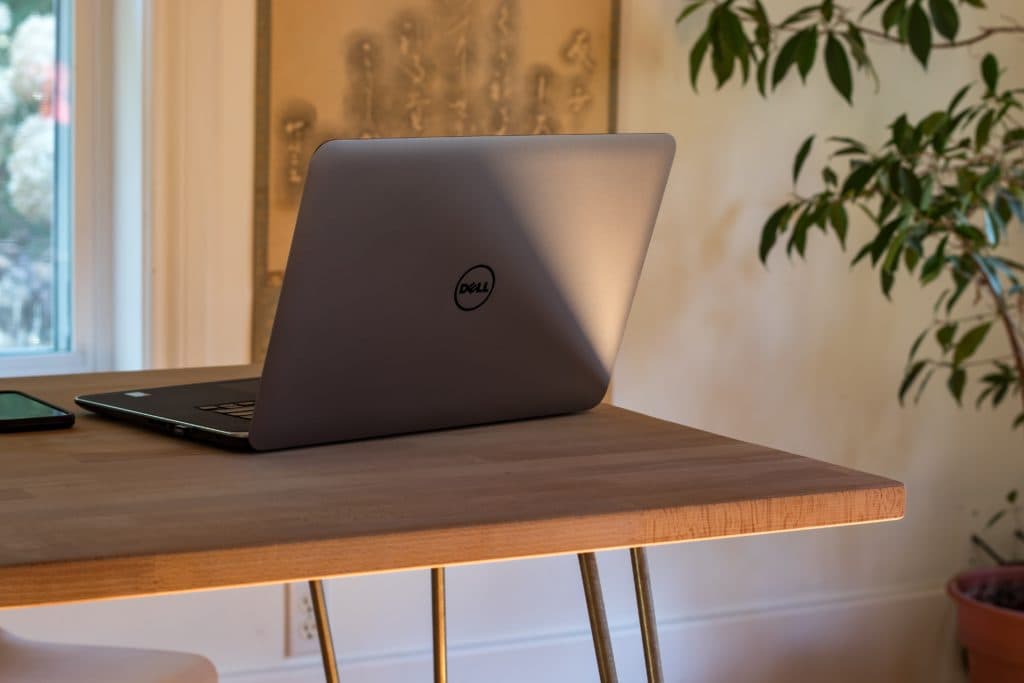Why is the Fan Running Constantly on My Dell Laptop?
By Trae Jacobs,
When you buy through our links, we may earn an affiliate commission.
You are using your Dell laptop under normal working conditions, but hear an unusually loud sound from the laptop’s fan. It seems like the fan is constantly running at high speed, and you are wondering why.
There are several reasons why the fan may be running constantly. The most common reasons include an overload in the CPU, dirty or obstructed fans or vents, poor ventilation, damaged components, or outdated BIOS or drivers.
Overheating laptops are no joke, and the problems that cause them should be taken care of immediately! Let’s take a deeper look into the possible causes and how to address them.
How to Stop the Fan from Constantly Running on a Dell Laptop
If the fan on your Dell laptop will not stop running, you can try a few things that may solve the issue. These include:
- End all unnecessary background tasks
- Clean and clear the fans and vents
- Help your laptop cool down
- Update BIOS and device drivers
- Modify your cooling settings
- Check the hardware
Follow the steps below to see if any of these solutions fix the problem.
End All Unnecessary Background Tasks
This is especially important if you are not working with a high-performance machine. To see what programs are using the most CPU power, press CTRL+ALT+DELETE and click Task Manager. A window will pop up showing all the programs currently running and what percentage of the CPU they are using.
Close any programs you do not need at the moment by right-clicking and selecting “End Task.” If you are navigating a browser, close as many tabs as possible. Try not to have more than 3-4 tabs open at any time.
Clean and Clear All Fans and Vents
Find the air vents on your laptop. These are usually located on either the back or side of your computer. Make sure nothing is blocking them and that they have enough clearance to allow for proper airflow. You should avoid setting your laptop on soft surfaces. Instead, place it on a hard, flat surface.
The vents or fans could also be dusty, restricting proper airflow. You should clean your laptop vents once every month or two to maintain the computer’s performance.
The best way to clean your vents or fans is by using a compressed air duster. Avoid using a vacuum cleaner, as these generate static charges that could damage the laptop’s electronic components.
Help Cool Your Laptop
Are the fans still running non-stop? Your laptop might need some extra help with cooling.
Try elevating your laptop from the flat surface with a laptop stand or placing some supports underneath. This allows for extra ventilation on the bottom of the computer. Moving to a cooler will also help bring the operating temperature down.
Update the BIOS and Device Drivers
If none of the previous steps fixed the issue, it might be time to update the BIOS and device drivers. This ensures proper compatibility and gets all the software enhancements up-to-date to allow your computer to run smoothly.
The following device drivers control the temperature of the laptop:
- BIOS
- Chipset drivers
- Thermal chipset drivers
- Graphics Processing Unit (GPU) drivers
Visit the Dell website for more information on how to proceed with driver installation or for more help with BIOS updates.
Modify the Cooling Settings on Your Laptop
If the problem persists, it could mean that your settings are adjusted to run the fan constantly. Luckily, you can easily change this from the Power Settings:
- Go to the Windows search bar and type in “Power and Sleep Settings.”
- Find “Additional Power Settings” under Related Settings.
- Click Change Plan Settings, then go to Change Advanced Power Settings.
- A Power Options window will pop up. Expand “Processor Power Management,” then expand “System Cooling Policy” under it.
- You will find that the default settings are set to “Passive” while you’re using battery power and “Active” when the laptop is plugged in. Change both to “Passive.”
This will run the fan only when completely necessary. However, it will also limit the CPU’s processing speed. For this reason, it’s not recommended if you need that extra bit of computing power.
Check the Hardware Using Dell Pre-Boot System Assessment
Is the fan still running at full capacity? If so, it is time to check for any damaged hardware. Fortunately, Dell provides built-in and online hardware diagnostics tests that can quickly identify the issue.
To run the diagnosis, follow these steps:
- Restart your computer.
- Press F12 repeatedly while the computer is powering up to access the Boot Menu.
- Use the arrows on the keyboard to select “Diagnostics.” Then, press Enter.
- If there are any damaged components, write down the validation and error codes.
- Look up how to fix the issue or contact Dell Support, attaching the relevant codes.
The Dell website offers more information on Pre-Boot Support Assessment (PSA).
Final Thoughts
There are many reasons why your laptop fan may be running non-stop. Try the fixes listed above and see if they solve the problem. If none of the above steps work, take the device to a licensed technician or contact Dell on their official site before taking any other steps to avoid further damage.
- No related articles yet

